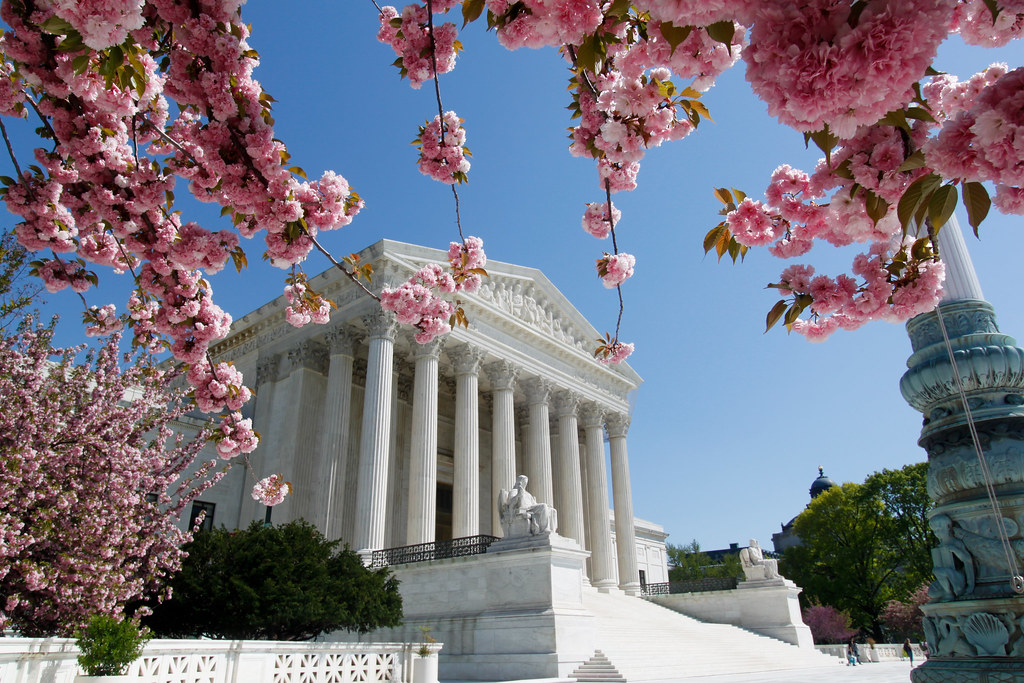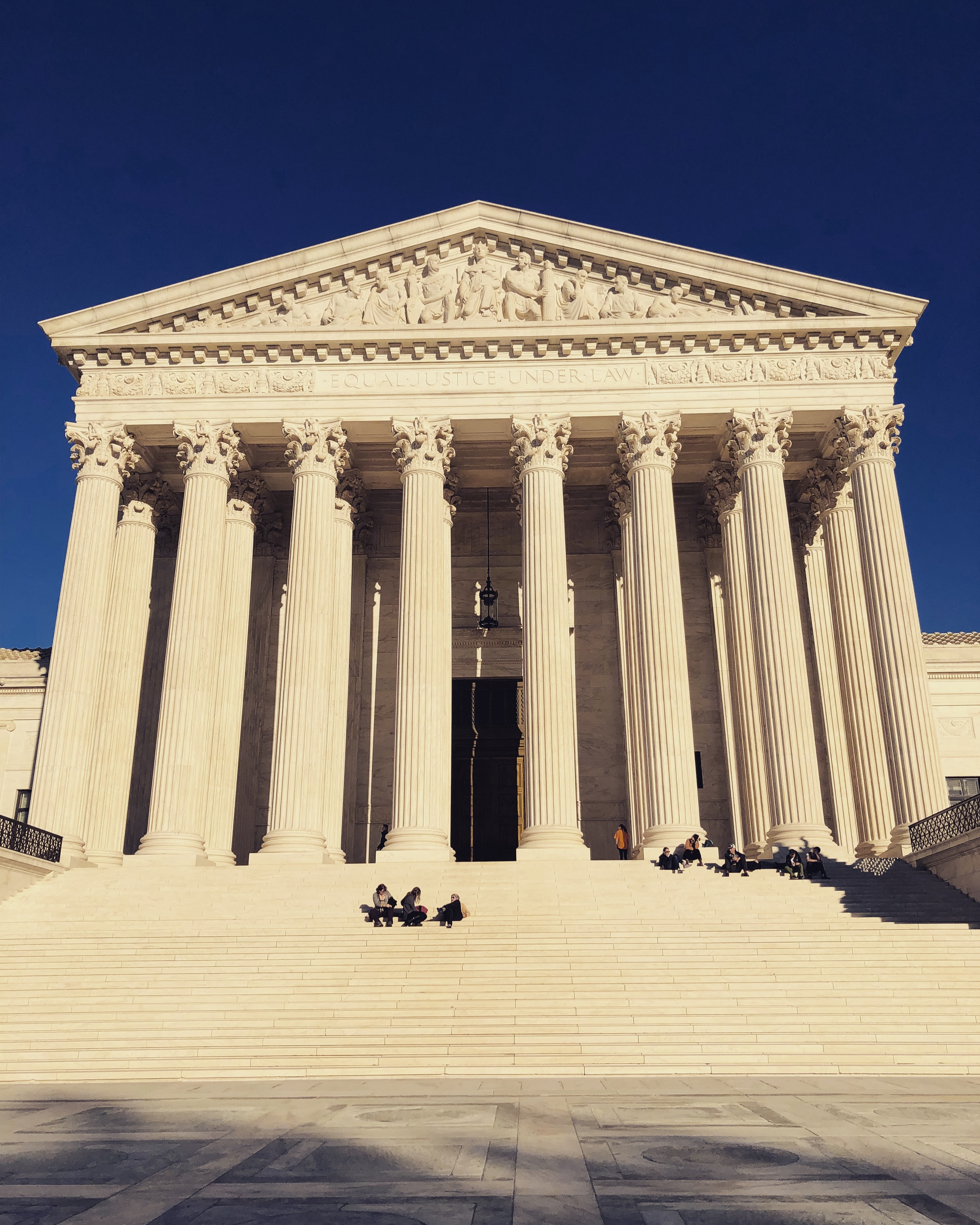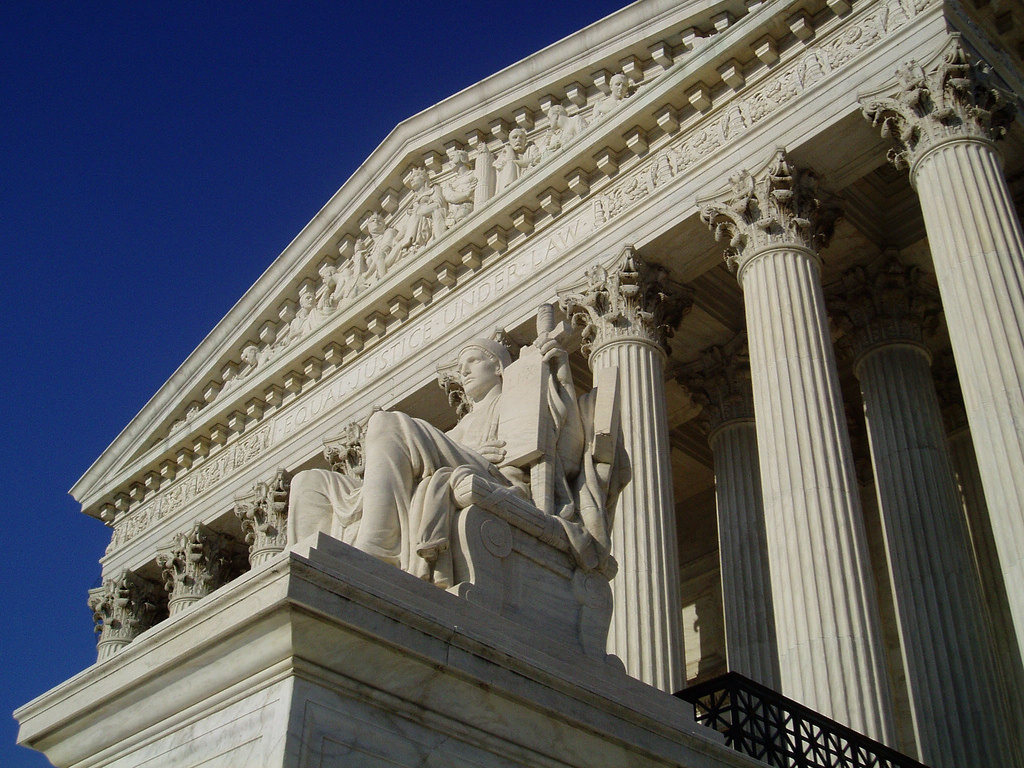
A Big Answer To A Big Question. After dividing the courts for a number of years, we finally have the answer to the big question of whether rejection of a trademark license by a debtor-licensor deprives the licensee of the right to use the trademark. Here’s the question on which the Supreme Court granted certiorari in the Mission Product Holdings, Inc. v Tempnology, LLC case:
Whether, under §365 of the Bankruptcy Code, a debtor-licensor’s “rejection” of a license agreement—which “constitutes a breach of such contract,” 11 U.S.C. §365(g)—terminates rights of the licensee that would survive the licensor’s breach under applicable nonbankruptcy law.
On May 20, 2019, the Supreme Court issued is decision in Tempnology, diving deep into the meaning of rejection of executory contracts in bankruptcy and delivering the answer:
“We hold it does not. A rejection breaches a contract but does not rescind it. And that means all the rights that would ordinarily survive a contract breach, including those conveyed here, remain in place.”
Get Your Copy Of The Decision. Justice Kagan, for an 8-1 majority, wrote a very interesting and readable decision. Justice Sotomayor wrote a short concurring opinion while Justice Gorsuch was the lone dissenter. Follow the link for a copy of the full Supreme Court opinion. An analysis of the key aspects of the decision is below.
The Key Facts. Before going further, it’s important to review the main facts. Tempnology, LLC (“Tempnology”) and Mission Product Holdings, Inc. (“Mission”) were parties to a Co-Marketing and Distribution Agreement (“Agreement”). In the Agreement, Tempnology granted Mission (1) a non-exclusive license to certain of Tempnology’s copyrights, patents, and trade secrets, (2) an exclusive right to distribute certain cooling material products that Tempnology manufactured, and (3) an associated trademark license.
After various disputes over the Agreement, Tempnology filed Chapter 11. One of its first motions in the bankruptcy case was to reject the Agreement and the focus quickly turned to the trademark license. Tempnology sought and obtained declaratory relief from the bankruptcy court holding that rejection terminated Mission’s rights under the trademark license.
The Long And Winding Road. Given its importance, this blog has followed the Tempnology case’s roller coaster ride for more than three years. You can relive those twists and turns and get more background on the case by clicking on the links below.
The Circuit Split. The case got to the Supreme Court because of a split between the First and Fourth Circuits on the one hand, and the Seventh Circuit on the other hand, on the impact of rejection on trademark licensees. A little history will help set the stage for the Supreme Court’s opinion:
- Back in 1985, the Fourth Circuit issued a seminal decision on the effect of rejection, Lubrizol Enterprises, Inc. v. Richmond Metal Finishers, Inc., 756 F.2d 1043 (4th Cir. 1985). The Fourth Circuit held that rejection of a license terminates the licensee’s rights to use the previously licensed intellectual property.
- In response to Lubrizol, Congress enacted Section 365(n) of the Bankruptcy Code to protect licensees of enumerated types of intellectual property from the impact of rejection. However, unlike patents, copyrights, and trade secrets, trademarks were not included in the definition of “intellectual property” in Section 101(35A) of the Bankruptcy Code, leading most courts to hold that trademark licensees have no protection under Section 365(n).
- After almost thirty years of calm, a circuit split started in 2012 when the Seventh Circuit issued its decision in Sunbeam Products, Inc. v. Chicago American Manufacturing, LLC, 686 F.3d 382 (7th Cir. 2012). In Sunbeam, the Seventh Circuit expressly rejected Lubrizol and held that rejection of a trademark license did not terminate the licensee’s rights to use the trademarks. The court held that under Section 365(g) of the Bankruptcy Code, rejection operates as a breach by the debtor but not as a termination of the contract.
- The First Circuit in Tempnology followed the Lubrizol decision and not Sunbeam, holding that Tempnology’s rejection terminated the rights of the licensee, Mission, to use the trademarks.
- The Supreme Court’s decision, in reversing the First Circuit, sided with the Seventh Circuit’s view in Sunbeam and effectively overruled the Fourth Circuit’s 1985 Lubrizol decision.
The Supreme Court’s Majority Opinion. The Supreme Court’s decision first addressed whether the case was moot before moving on to the merits.
Mootness. The Court held the case was not moot because Mission made at least a plausible claim for money damages based on Tempnology’s rejection and Mission’s subsequent inability to use the trademarks. That was enough of a live controversy for the majority. Justice Gorsuch, who raised the mootness issue at oral argument, dissented. He believed it was unclear whether there was a real controversy and would dismiss the case as improvidently granted.
With mootness out of the way, the Court turned to Section 365’s provisions:
Section 365 of the Bankruptcy Code enables a debtor to “reject any executory contract”—meaning a contract that neither party has finished performing. 11 U. S.C. §365(a). The section further provides that a debtor’s rejection of a contract under that authority “constitutes a breach of such contract.” §365(g).
Executory Contract. The Court’s reference to an executory contract as “a contract that neither party has finished performing” is interesting in itself. That statement could be read as less demanding than the commonly cited “Countryman definition,” which focuses on whether a failure to complete performance would constitute a material breach. It’s unclear whether the Court meant to remove “material breach” from the definition but lawyers may well argue over it.
Breach Not Rescission. Turning to the main substance of the rejection issue, the Court framed, and then answered, the question as follows:
What is the effect of a debtor’s (or trustee’s) rejection of a contract under Section 365 of the Bankruptcy Code? The parties and courts of appeals have offered us two starkly different answers. According to one view, a rejection has the same consequence as a contract breach outside bankruptcy: It gives the counterparty a claim for damages, while leaving intact the rights the counterparty has received under the contract. According to the other view, a rejection (except in a few spheres) has more the effect of a contract rescission in the non-bankruptcy world: Though also allowing a damages claim, the rejection terminates the whole agreement along with all rights it conferred. Today, we hold that both Section 365’s text and fundamental principles of bankruptcy law command the first, rejection-as-breach approach. We reject the competing claim that by specifically enabling the counterparties in some contracts to retain rights after rejection, Congress showed that it wanted the counterparties in all other contracts to lose their rights. And we reject an argument for the rescission approach turning on the distinctive features of trademark licenses. Rejection of a contract—any contract—in bankruptcy operates not as a rescission but as a breach.
Effect Of Rejection. Justice Kagan first examined Section 365(a), which gives a debtor the option to assume or reject an executory contract, and Section 365(g), which provides that rejection “constitutes a breach” of the executory contract.
- The Court used an example of a law firm leasing a photocopier from a dealer that also agrees to service it, all for a monthly fee.
- The “dealer cannot get back the copier just by refusing to show up for a service appointment” because the contract gave the law firm “continuing rights in the copier, which the dealer cannot unilaterally revoke.”
- Concluding the same result applies in bankruptcy, the Court held that when it comes to a license agreement, “the debtor can stop performing its remaining obligations” upon rejection but “cannot rescind the license already conveyed” and the “licensee can continue to do whatever the license authorizes.”
- Preserving those rights is also consistent with the bankruptcy principle that the bankruptcy estate cannot possess more than the debtor did outside of bankruptcy. A holding that rejection constitutes rescission rather than breach would circumvent the avoidance powers that allow a trustee or debtor, in specific circumstances, to unwind pre-bankruptcy transfers such as fraudulent conveyances.
- Permitting a debtor or trustee to achieve the same result through rejection of an executory contract, and recovering the previously conveyed interest in a trademark or other property, would make rejection “functionally equivalent to avoidance.”
No Negative Inference. One of Tempnology’s main arguments was that enactment of statutory provisions such as Sections 365(h) and 365(n), allowing a counterparty to a real-property lease and intellectual property license to retain rights after rejection, creates a negative inference that in all other cases rejection revokes the counterparty’s rights. Otherwise, it argued, the general rule would swallow the exceptions.
The Court found that argument to be flawed in part because Tempnology viewed the statutory exceptions as a “neat, reticulated scheme” when “history reveals [them] to be anything but.” Enacted over a fifty year period, “each responded to a discrete problem–as often as not, correcting a judicial ruling of just the kind Tempnology urges.” The Court found that “Congress enacted the provisions, as and when needed, to reinforce or clarify the general rule that contractual rights survive rejection.”
The opinion then includes Footnote 2, which states as follows:
At the same time, Congress took the opportunity when drafting those provisions to fill in certain details, generally left to state law, about the post-rejection relationship between the debtor and counterparty. See, e.g., Andrew, Executory Contracts in Bankruptcy, 59 U. Colo. L. Rev. 845, 903, n. 200 (1988) (describing Congress’s addition of subsidiary rules for real property leases in Section 365(h)); Brief for United States as Amicus Curiae 29 (noting that Congress similarly set out detailed rules for patent licenses in Section 365(n)). The provisions are therefore not redundant of Section 365(g): Each sets out a remedial scheme embellishing on or tweaking the general rejection-as-breach rule.
Reviewing the history of Section 365(n), enacted in response to the Lubrizol decision involving patent licenses, Justice Kagan concluded it shows no intent by Congress to ratify Lubrizol’s result for all other agreements. That means no negative inference arises and Section 365(n) does not “alter the natural reading of Section 365(g)–that rejection and breach have the same results.”
No Trademark Exception. The final Tempnology argument addressed and dismissed was that the nature of trademark law, and the potential burdens on reorganization posed by exercising quality control over the trademarked goods, compels a different result. Although presented as a trademark issue, the Court found that Tempnology’s construction of Section 365 would “govern not just trademark agreements, but pretty nearly every executory contract. However serious Tempnology’s trademark-related concerns, that would allow the tail to wag the Doberman.” Instead, the Court held that while rejection allows a debtor to escape all future contract obligations, it does not grant an exemption from generally applicable law, including trademark law and its quality control obligations.
The Court concluded:
For the reasons state above, we hold that under Section 365, a debtor’s rejection of an executory contract in bankruptcy has the same effect as a breach outside bankruptcy. Such an act cannot rescind rights that the contract previously granted. Here, that construction of Section 365 means that the debtor-licensor’s rejection cannot revoke the trademark license.
Justice Sotomayor’s Concurrence. In a two-page concurring opinion, Justice Sotomayor wrote separately “to highlight two potentially significant features of today’s holding.”
- First, she stated that “the Court does not decide that every trademark licensee has the unfettered right to continue using licensed marks postrejection.” The “baseline inquiry remains whether the licensee’s rights would survive a breach under applicable nonbankruptcy law,” and posits that “[s]pecial terms in a licensing contract or state law could bear on that question” in particular cases.
- Second, “the Court’s holding confirms that trademark licensees’ postrejection rights and remedies are more expansive in some respects that those possessed by licensees of other types of intellectual property. Those variances stem from §365(n), one of several subject-specific provisions in the Bankruptcy Code that ’emellis[h] on or twea[k]’ the general rejection rule.”
- Describing Section 365(n)’s requirements requiring royalty payments to be made and precluding the deduction of damages from those payments, she then states that “[t]his provision and others in §365(n) mean that the covered intellectual property types are governed by different rules than trademark licenses.”
- She concludes that these “differences may prove significant for individual licensors and licensees” but do not alter the Court’s outcome in the Tempnology case.
Justice Sotomayor’s concurrence raises important questions regarding Section 365(n):
- After Tempnology, are Section 365(n)’s provisions mandatory for the types of intellectual property licenses it covers in conjunction with Section 101(35A)’s definition, as Justice Sotomayor writes?
- Footnote 2 of the Court’s majority opinion states that Section 365(n) is “not redundant,” and that Sections 365(n) and 365(h) are each a “remedial scheme embellishing on or tweaking the general rejection-as-breach rule,” but the Court’s opinion does not affirmatively state that those provisions are exclusive.
- Does Justice Sotomayor’s concurrence accurately describe the majority opinion, in particular about the binding effect of Section 365(n), or assert a position the Court’s majority was not comfortable stating, even in a footnote?
Conclusion. The Supreme Court’s Tempnology decision definitively resolves the circuit split and ends the Lubrizol view that rejection under Section 365 terminates a counterparty’s rights. It answers the big question of the impact of rejection under Section 365, making it an important decision with significant implications for parties to trademark license agreements and other executory contracts.
Image Courtesy of Flickr by Tim Sackton



